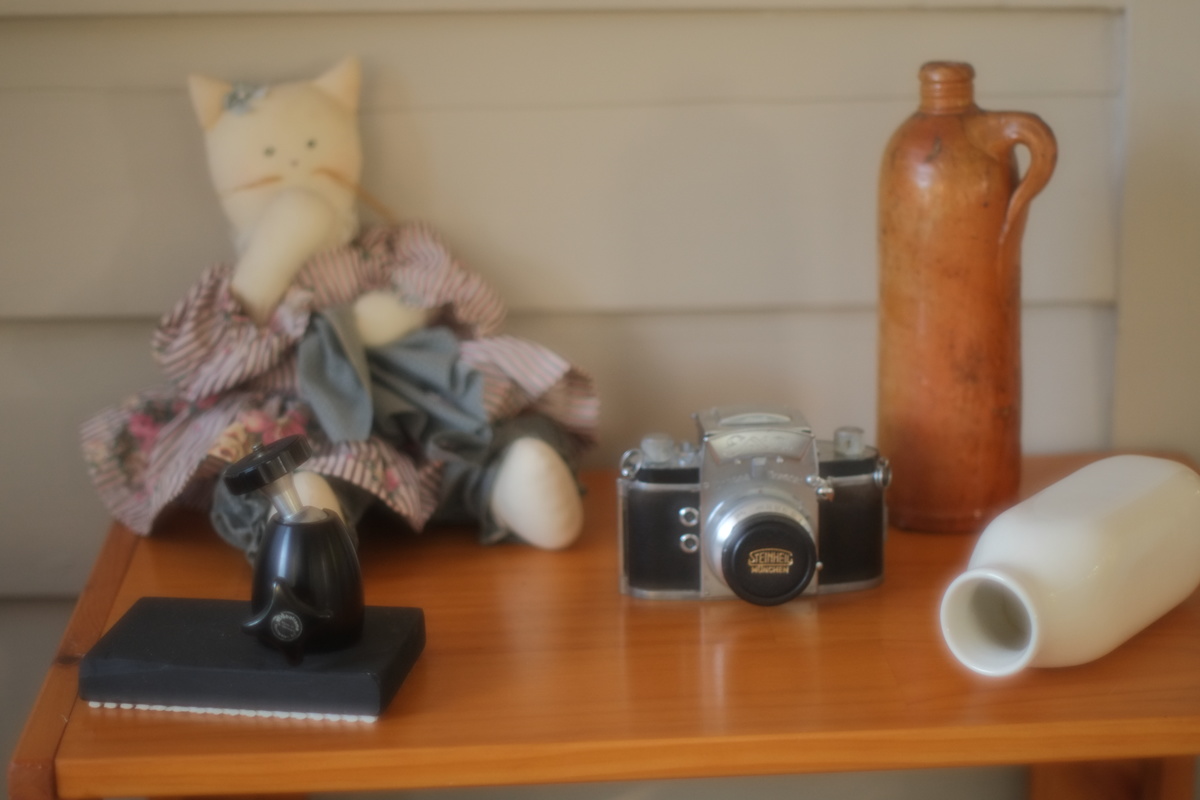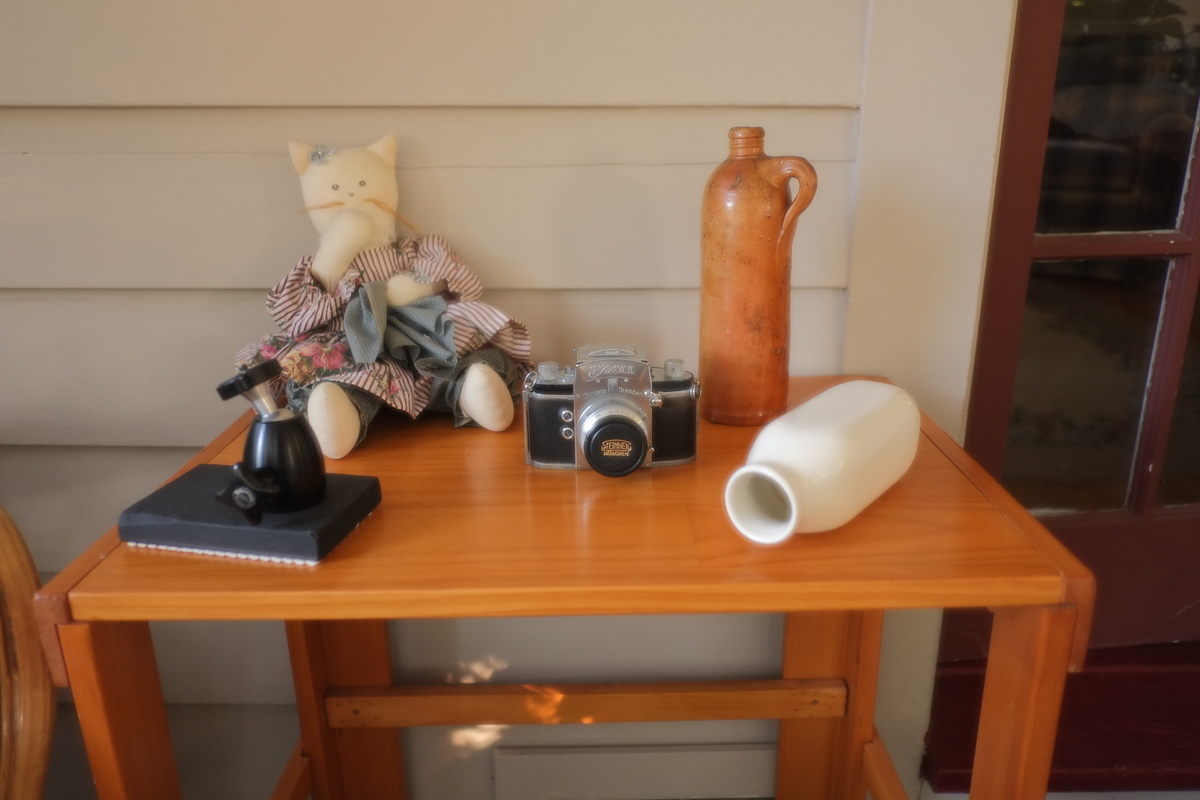Click on the tags to see the filter effects in the picture below.
All pictures are with the Softar filter mounted on the lens.
/ 50mm@f1.4 / 50mm@f2.0 / 50mm@f4.0 / 50mm@f8.0 / 50mm@f16

/ 18mm@f2.0 / 18mm@f4.0 / 18mm@f8.0 / 18mm@f16
Notice the local distortions (watch the camera) as aperture is changed. What's happening is that, when DOF is large, the camera lens is "seeing" the Softar micro lenses.

X-E1 / Minolta MC50/1.4@f2.0
X-E1 / Minolta MC50/1.4@f4.0
The softar filter does it's magic with smooth, reflective surfaces. I very much like making the shadows very dark and using not-frontal lighting.
As for textured surfaces, the softar smooths them out. This may be flattering in portraits (smooths skin a bit), but it kind of smudges fabric textures, which can look bad.
Fuji X-E1 / Fuji 27mm/f2.8@f5.6 / Softar2Filter
I am surprised the filter did not flare due to the hot light.
(Other lenses may be more prone to flare in this case - my Fuji X100 is notorious for doing that - so I won't generalize this result.)
The softar adds a (what to call it?) ... "luxury" to the look of smooth surfaces. There may be problem spots though - look at the excessive "glow" of the candle jar cover. This may be a local effect of one of the softar's microlenses at that spot. (See the first discussion on this page.)
X-E1 / Minolta MC50mmf1.4@f4.0 / Softar / Grayscaled using The GIMP